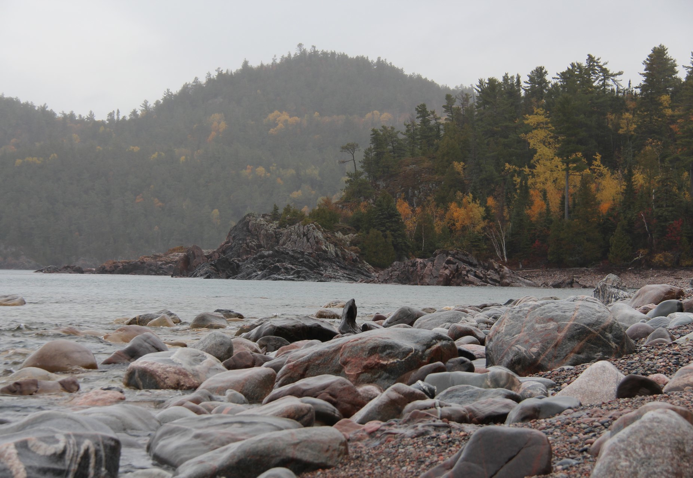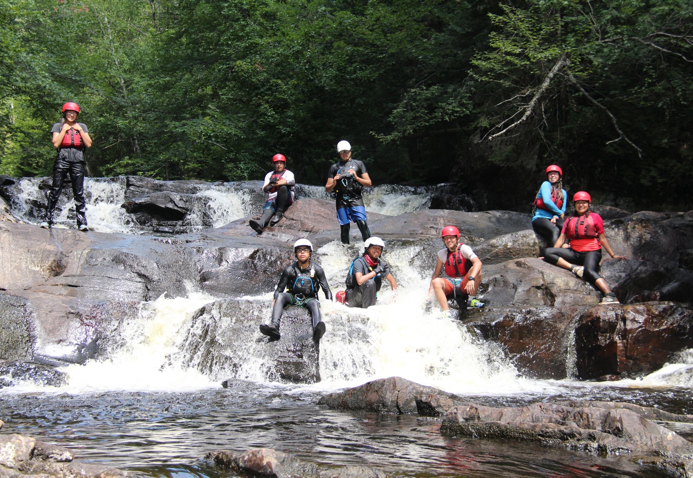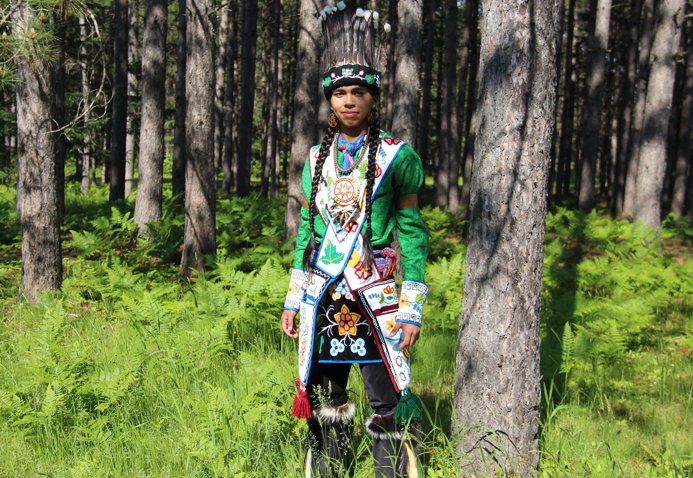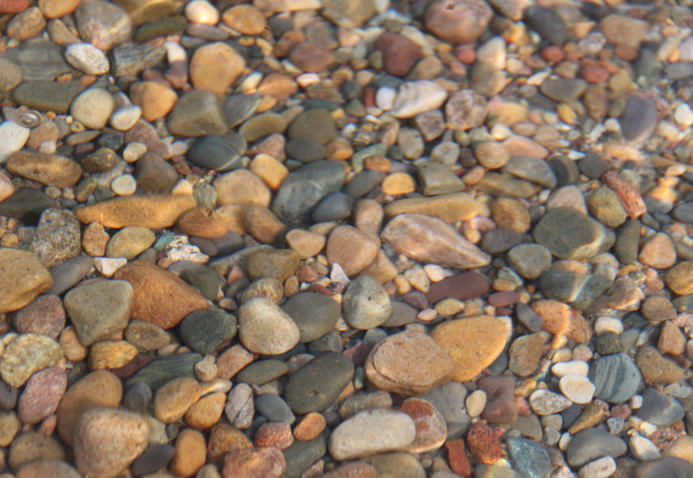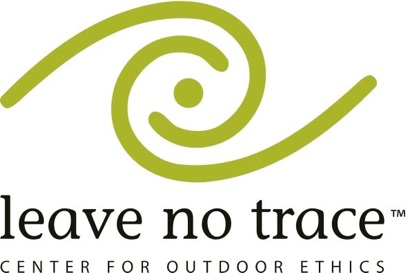Great Lakes Stewardship Project
Gchi-Gamiin (Great Lakes) Stewardship Project mission is: “To empower youth to lead the way and serve their communities through Anishinaabe culture, meaningful character-building, direct involvement, and environmental stewardship opportunities that encourage gwekwaadiziwin (integrity) with self and others.”
Our Past
Great Lakes Cultural Camps was contracted and hired by Temagami First Nation (Bear Island) to create, develop and deliver the N’Daki Menan Stewardship Program for 2013, 2014, and 2015.
The N’Daki Menan Stewardship Program provides opportunities for First Nation youth to: engage in natural resource stewardship projects; earn a wage through meaningful employment; and gain valuable work experience. Over the last 3 years (2013 - 2015) we paddled over 1,000 km, cleaned debris, students obtained ORCKA canoe certification in: (basic canoe, canoe tripping, moving water, river running), visited historical and sacred sites, learned Anishnaabe history, established meaningful partnerships with local and provincial resource industries, and camped over 100 days covering Temagami, Dumoine River, and the Missinaibi River.
Our Future and Beyond
This year (2022) we are looking to establish partnerships with sector professionals in order to learn about local and provincial resource industries. Specifically this would entail, presentation to Great Lakes Stewardship Project students on the following: exploration of career paths in natural resources, tourism, and the outdoor adventure industry.
Our 2016 season locations will involve stewardship initiatives on the coast of Lake Superior, waterways along the North Shore, Manitoulin Island, French River and the Saint Lawrence River. To learn more, create a partnership or how get involved contact Great Lakes Cultural Camps directly at: info@culturalcamps.com
Being A Caretaker of the Earth
Indigenous peoples are caretakers of Mother Earth and realize and respect her gifts of water, air and fire. First Nations peoples’ have a special relationship with the earth and all living things in it. This relationship is based on a profound spiritual connection to Mother Earth that guided indigenous peoples to practice reverence, humility and reciprocity. It is also based on the subsistence needs and values extending back thousands of years. Hunting, gathering, and fishing to secure food includes harvesting food for self, family, the elderly, widows, the community, and for ceremonial purposes. Everything is taken and used with the understanding that we take only what we need, and we must use great care and be aware of how we take and how much of it so that future generations will not be put in peril.
Assembly of First Nations
What students have to say
about their experience
“Why is it important that we take a hands-on interest in waterway and backcountry stewardship?
“I use to never be close with the land. The way I look at the land now is different from what I use to think of it. 2 Years on this wonderful project has opened my eyes and I have fallen in love with the land. Those two years was a great experience for me and I learned so much when I was out there. You learn to respect the land after seeing all the filth that is on it. You want to clean up the mess that shouldn't be there. This project has changed me for the better and I have fallen in love with the land and all the things I've seen out there. There is much more things to see out there than what you see in cities/towns.”
Emily (2nd year student)

“What Did the Stewardship Program Mean To You?
The stewardship program is to reunite students to their heritage and culture and live the experience of their ancestors. Also to take care of the land that my ancestors lived, hunt, fished and canoed in for a living. The program helped me learn the history of my people and the sacred places which was my ancestors treasured and took care of it for hundreds of years before waste and garbage came to play. ”
Dylan, (1st year student)
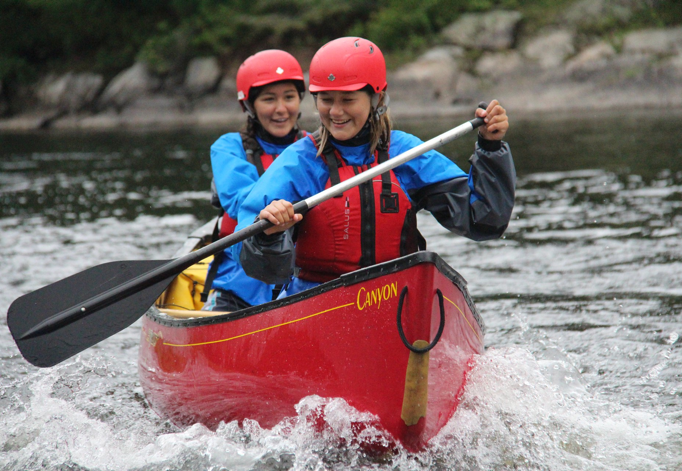
“What was your favourite moment on the Dumoine river during the ORCKA River Running 1A (tandem) course?
My most favourite moment during the River Running course was when my partner and I went down a rapid with a ledge at the very end, and since we were the last boat we could see that the drop was large. We were in a boat with a lower rocker than the rest and so when we hit the ledge I knew we were going to take in a lot of water. This was my favourite moment because it gave me a huge adrenaline rush. Running the river with a loaded boat is fun enough but when you have those moments when your going through some big waves or theirs lots going on in the rapids its pinching and exciting.”
Alyssa, (3rd year student)
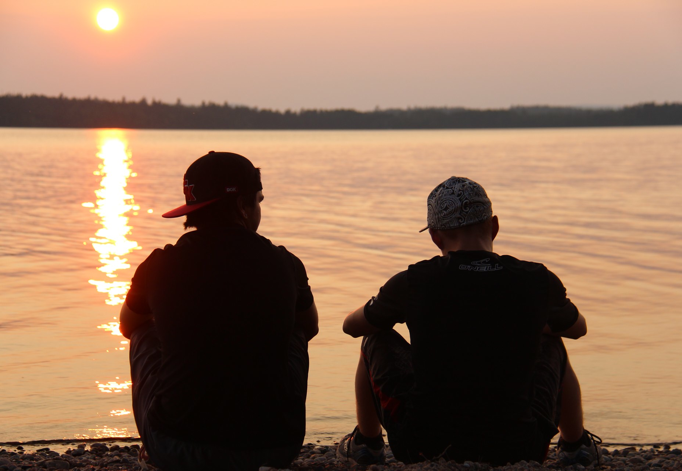
“What Did the Stewardship Program Mean To You?
The stewardship program was an eye opener for me. I did not expect the things i saw to be so bad until i was out there. The stewardship project gave me a different perspective on how I look at the project now. At first I thought it was just a trip and now I know that it is more because were learning about our past and how things were and historical places and also were earning certificates at the same time. It makes me feel better because now were actually taking steps toward our future and were the start of a big project that can happen. Other than that, personally I feel happy and great that this project is happening. As the trips went on it brought the best out of me and burnt off the anger and hate I had inside. It made me happy and it brought out skills I didn’t think I’ve had, like for example I didn’t think I was able to lead the group as efficiently as I did. It also worked on my organization skills because everything had to be packed a certain way and be done a certain way. I am surprised with myself and my group. I am truly proud of the group and myself and how things went for us. Overall the stewardship program means a lot to me because of everything we learnt and everything we have done.”
Jordan (1st year student)
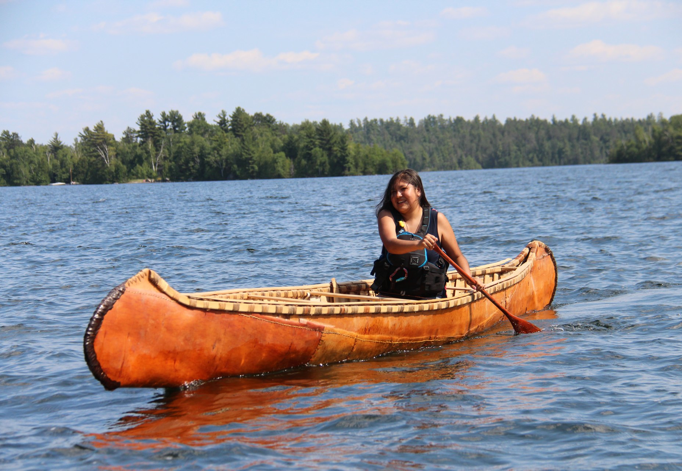
“What was your favourite moment during the ORCKA basic canoe level 4 solo course?
I thought my favourite moment would be when we were practicing canoe-over-canoe rescue when I tipped my canoe because I enjoyed being in the water and also when Noodin slingshotted me in the boat too because it was funny how I fell. But I just think all day was my favourite because all day was awesome!!”
Calista (2nd year student)
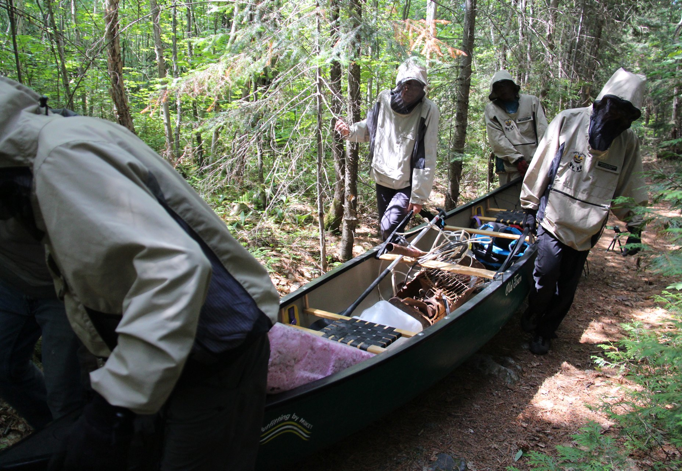
“Why is it important that we take a hands-on interest in waterway and backcountry stewardship?
It’s important that we take a hands on interest in water-way/backcountry stewardship because it connects us to our roots as native peoples, and helps us become more a part of our communities and explore nature in first person with lots of contact (like bug bites lol). Also it’s fun to be in the middle of nature, where anything can happen. It’s so unpredictable. That’s why I’m interested in the water-way/backcountry experiences”
Selena (1st year student)
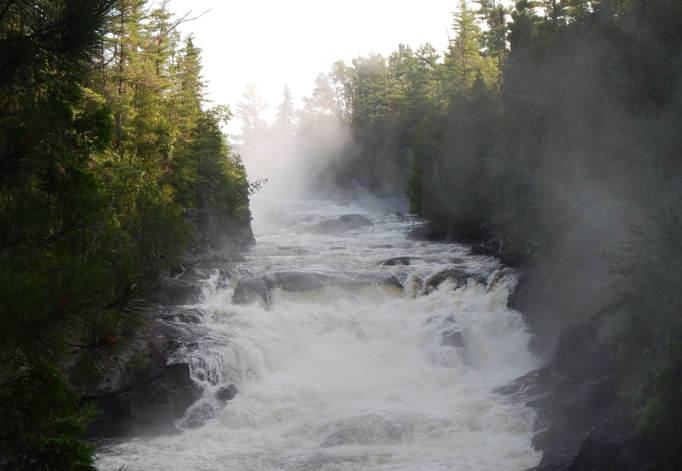
“What was your favorite moment on the Dumoine river during this ORCKA River Running 1A (tandem) course?
My favourite moment was running the rapids. This was my favourite moment because I got to go in a loaded canoe down fast moving waters without tipping the canoe. Also, another good moment was learning how to line the boats. And surfing.”
Maddy, (1st year student)
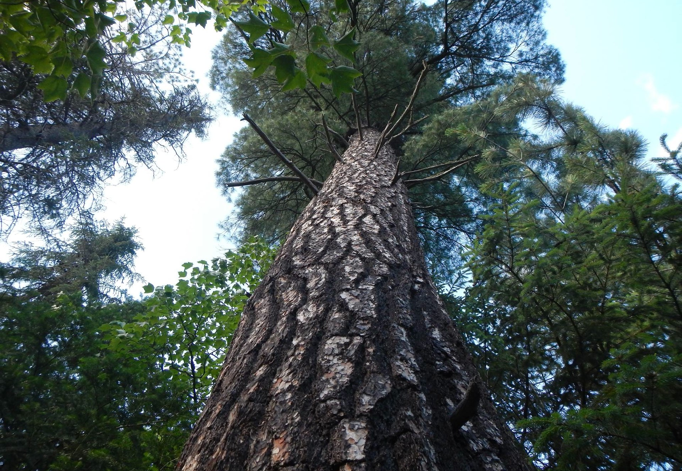
“What was your favourite meal last week on the White Bear Forest Trail?
My favourite meal this week on the white bear forest trail was the kung pao chicken. Alex were on dinner prep, it was amazing and I didn’t think we could make something so great or cook something like that outdoors. It was a great experience and I enjoyed the whole week.”
Mathew (1st year student)
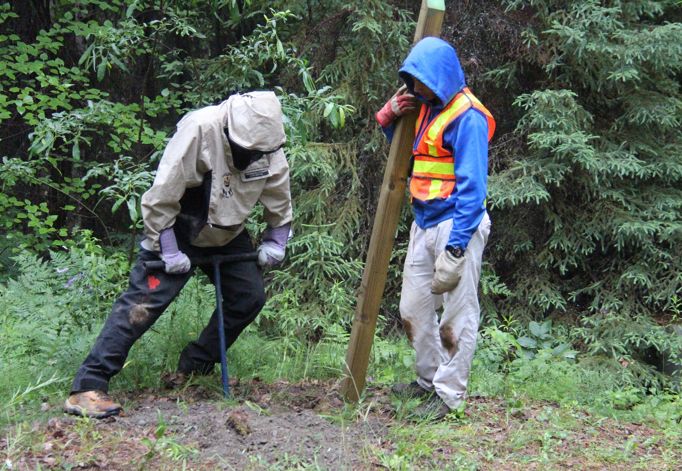
“How does today’s work experience on the White Bear Forest Trails contribute towards the goals of the stewardship program. Expand.
Today’s work experience contributes to the goals of the stewardship program because it helped us to know how to put a post in the ground. The tools that we needed, and the work that goes into being on a trail to fix/clean it. It also helps to show what kind of conditions we would be working in, like the bugs, the rain, the hot humid sun, all kinds of conditions that are going to help us on the real field. I heard the bugs are terrible at Dumoine River, so its good to get used to them now. This also helps to contribute because it helps the white bear explorers know where they are and where they’re going.”
Alex Jr., (2nd year student)
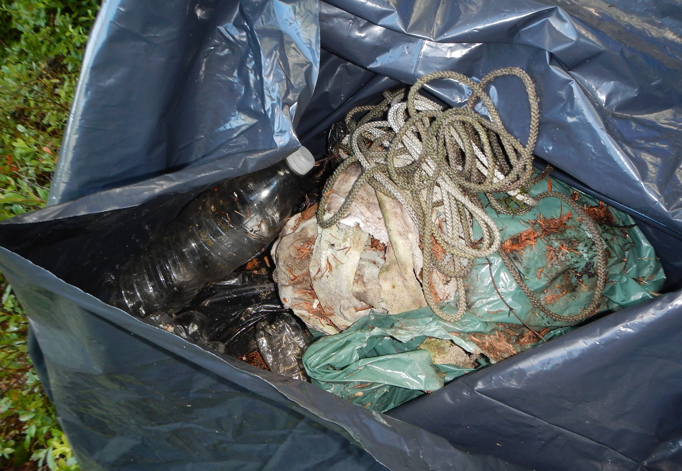
“What Did the Stewardship Program Mean To You?
The stewardship program meant a lot to me because it gave me the opportunity to experience things that i couldn't experience back in the city such as , canoeing , whitewater paddling and tripping. It also gave me the chance to earn some canoeing qualifications. Also it gave me summer employment and taught me skills that are transferable to other jobs. While on trip I also learned about my native heritage and taught me a lot about stuff i didn't know about me ancestors and i was just an overall cool experience.”
Jacob (1st year student)
What People Are Saying About Great Lakes Cultural Camps and the Stewardship Program
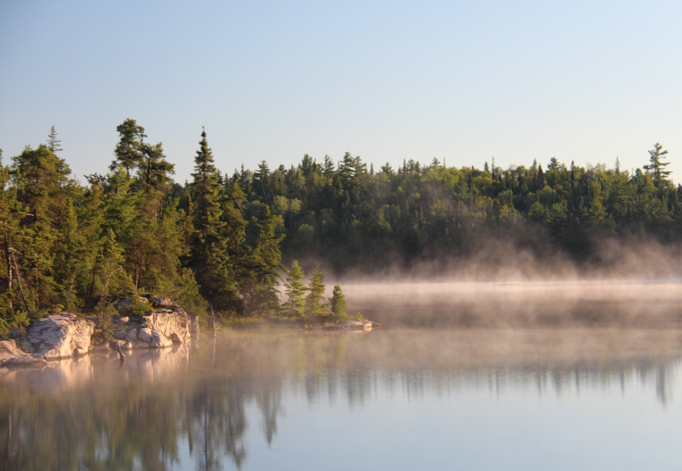
“Thank you for all you have done with our youth. It has been life changing for them. Leadership, identity, stewardship, responsibility, team work, respect amongst others have been passed on to our Youth. They are our future generations !! Your family is awesome !! I am also proud of our Youth that participated in this program, hard work and a knowledge you will not get from any text book !!”
Donna, Parent of Stewardship Participant
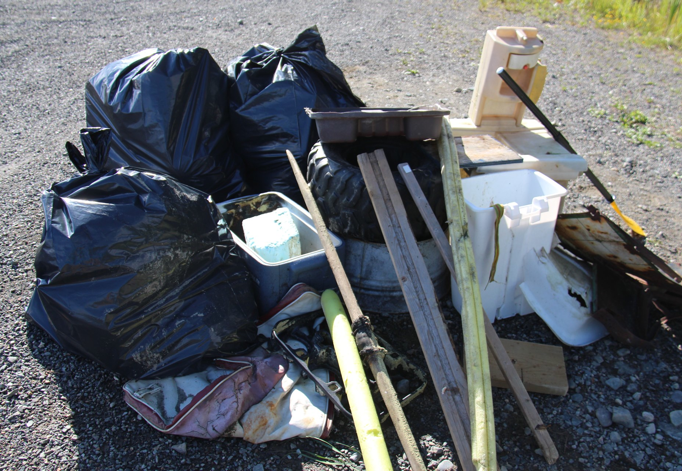
“Hats off to those youth over the past few years......Pretty awesome to see the growth that has happened in those youth, the cultural teachings.....the bonding, learning old ways....and the safety factor, and experiencing D'Aki Menan that ties them through families territories.....I am sure there were challenges.....and trying times, but I see all the good that has come out of this, and I think it just great that the base camp is right of our community!!! Hope to see our Youth in this program again this summer, and the awesome team from GLCC !!!”
Kim Montroy, Temagami First Nation Community Member
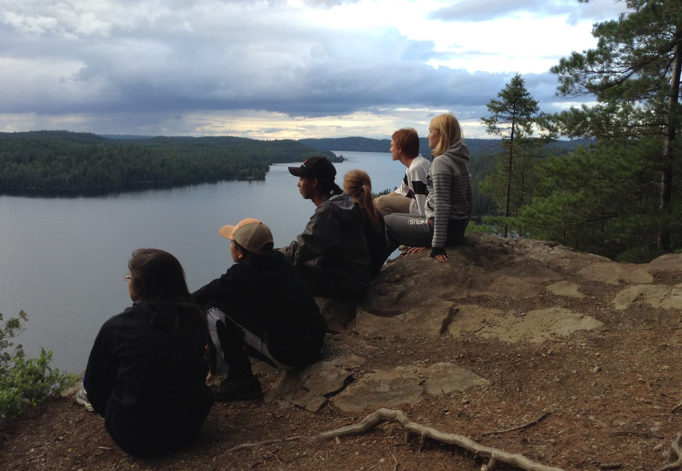
“The impact you and your organization has made on our community has been tremendously positive. I feel very fortunate that Temagami First Nation has had the opportunity to work with GLCC, you guys rock! Keep up the great work, I look forward to working with you again in the near future. All the best to you and your wonderful family.”
Former Chief Roxane Ayotte, Temagami First Nation (2013)
Leave No Trace
Leave No Trace is an national and international program designed to assist outdoor enthusiasts with their decisions about how to reduce their impacts when they hike, camp, picnic, snowshoe, run, bike, hunt, paddle, ride horses, fish, ski or climb. The program strives to educate all those who enjoy the outdoors about the nature of their recreational impacts as well as techniques to prevent and minimize such impacts. Leave No Trace is best understood as an educational and ethical program, not as a set of rules and regulations. Leave No Trace is about respecting and caring for wildlands, doing your part to protect our limited resources and future recreation opportunities. Once this attitude is adopted and the outdoor ethic is sound, the specific skills and techniques become second nature.
Leave No Trace
Seven Principles
Plan Ahead and Prepare
- Know the regulations and special concerns for the area you'll visit.
- Prepare for extreme weather, hazards, and emergencies.
- Schedule your trip to avoid times of high use.
- Visit in small groups when possible. Consider splitting larger groups into smaller groups.
- Repackage food to minimize waste.
- Use a map and compass to eliminate the use of marking paint, rock cairns or flagging.
Travel and Camp on Durable Surfaces
- Durable surfaces include established trails and campsites, rock, gravel, dry grasses or snow.
- Protect riparian areas by camping at least 200 feet from lakes and streams.
- Good campsites are found, not made. Altering a site is not necessary.
- In popular areas:
- Concentrate use on existing trails and campsites.
- Walk single file in the middle of the trail, even when wet or muddy.
- Keep campsites small. Focus activity in areas where vegetation is absent.
- In pristine areas:
- Disperse use to prevent the creation of campsites and trails.
- Avoid places where impacts are just beginning.
Dispose of Waste Properly
- Pack it in, pack it out. Inspect your campsite and rest areas for trash or spilled foods. Pack out all trash, leftover food and litter.
- Deposit solid human waste in catholes dug 6 to 8 inches deep, at least 200 feet from water, camp and trails. Cover and disguise the cathole when finished.
- Pack out toilet paper and hygiene products.
- To wash yourself or your dishes, carry water 200 feet away from streams or lakes and use small amounts of biodegradable soap. Scatter strained dishwater.
Leave What you Find
- Preserve the past: examine, but do not touch cultural or historic structures and artifacts.
- Leave rocks, plants and other natural objects as you find them.
- Avoid introducing or transporting non-native species.
- Do not build structures, furniture, or dig trenches.
Minimize Campfire Impacts
- Campfires can cause lasting impacts to the backcountry. Use a lightweight stove for cooking and enjoy a candle lantern for light.
- Where fires are permitted, use established fire rings, fire pans, or mound fires.
- Keep fires small. Only use sticks from the ground that can be broken by hand.
- Burn all wood and coals to ash, put out campfires completely, then scatter cool ashes.
Respect Wildlife
- Observe wildlife from a distance. Do not follow or approach them.
- Never feed animals. Feeding wildlife damages their health, alters natural behaviors, and exposes them to predators and other dangers.
- Protect wildlife and your food by storing rations and trash securely.
- Control pets at all times, or leave them at home.
- Avoid wildlife during sensitive times: mating, nesting, raising young, or winter.
Be Considerate of Other Visitors
- Respect other visitors and protect the quality of their experience.
- Be courteous. Yield to other users on the trail.
- Step to the downhill side of the trail when encountering pack stock.
- Take breaks and camp away from trails and other visitors.
- Let nature's sounds prevail. Avoid loud voices and noises.
GLCC and Leave No Trace
Great Lakes Cultural Camps is pleased to be a partner Leave No Trace and encourages GLCC students to utilize the 7 principles of LNT. In doing our part, GLCC includes the principles of LNT in all of our experiential learning programs and certification courses.

